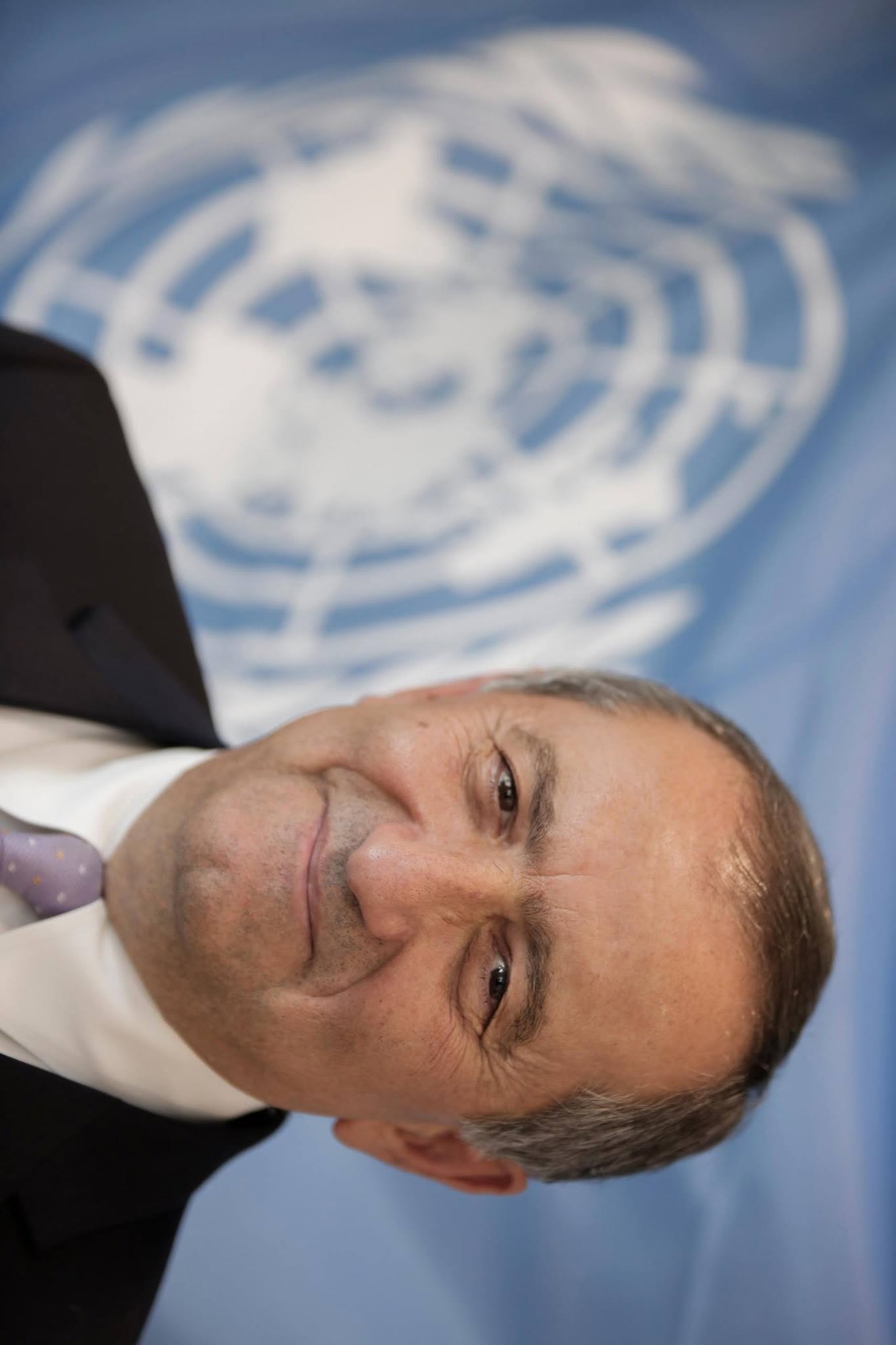In a Jungle Rules Era, Armenia Rides Diplomatic Roller-Coaster: From Western Dreams to Strategic Realism in the South Caucasus

David Akopyan
Member of Board of Directors of APRI, Yerevan
Armenia, located at the crossroads of Asia
and Europe, has long been pulled by the centrifugal forces of competing centers
of gravity. Though its cultural instincts and
democratic aspirations have long pointed West, the
path to alignment with Europe has proven anything but straightforward. Hemmed
in by history and geography, Armenia is increasingly learning that survival
depends not on loyalty to a single bloc, but on agility in a fractured global
order.
When the Soviet Union collapsed, for most
Armenians, Europe appeared as the true center of gravity—the promised land
within reach. Entrepreneurial and instinctively freedom-loving, Armenians were
historically ill-fitted to the autocratic traditions of the Russian and Ottoman
empires, always looking westward for alternatives. But
aspiration soon collided with the realities of war, geography, and abandonment.
A generation ago, Armenia endured one of
the worst shocks during the dissolution of the Soviet Union. Still recovering
from the catastrophic 1988 earthquake, the country was thrust into a triple
crisis in 1991: a full-scale war with Azerbaijan over Nagorno-Karabakh, an
economic meltdown stemming from the collapse of the centralized Soviet system,
and a suffocating blockade by both Azerbaijan and Turkey. Yet, against all
odds, Armenians managed to mobilize and prevail in what many considered an
unwinnable war.
Unfortunately, victory bred complacency.
From the late 1990s through the next two decades, Armenian leadership grew
comfortable placing the country
under the
Russian security umbrella, assuming the status quo would hold indefinitely and
that Azerbaijan, defeated and humiliated, would never return to the
battlefield. In return, Moscow gradually seized control over strategic
industrial assets, monopolized energy supply and distribution, and dominated
Armenia’s economic space. The Russian market, with its lower standards and
easier access, was perceived as a natural extension of Armenia’s economic life.
But short-term comfort came at a long-term
cost. Military complacency became endemic, while Azerbaijan—empowered by
surging oil revenues—quietly rearmed, preparing for a decisive revanche.
This pattern began to break in 2018 with
Armenia’s Velvet Revolution. In an unprecedented show of unity, nearly the
entire population—from artists to law enforcement—rose against corruption. The
revolutionaries took office in May 2018, ushering in a new era of hope and
reform.
However, good intentions were not matched
with geopolitical experience, sophisticated diplomacy and administrative
capacity. In 2020, Azerbaijan launched a full-scale war under the cover of the
global pandemic and just ahead of U.S. elections. The six-week war exposed
grave weaknesses in Armenia’s defense posture, both within its borders and in
Nagorno-Karabakh. The Russian-brokered ceasefire of November 9, 2020, came
dangerously close to capitulation, with Russian peacekeepers inserted as
temporary guarantors.
Russia’s 2022 invasion of Ukraine shifted
the strategic landscape. The South Caucasus fell further down Moscow’s priority
list, while Ankara and Baku rose higher. In September 2022, Azerbaijan attacked
Armenia proper. The CSTO response was tepid; instead, U.S. Secretary of State
Antony Blinken stepped in to halt further escalation.
In 2023, Azerbaijan launched a final
assault on Nagorno-Karabakh, resulting in the ethnic cleansing of 120,000
Armenians within days. Armenia stood helpless. The government realized,
painfully, that it lacked both the diplomatic leverage and military capacity to
protect its kin. Russian peacekeepers soon withdrew entirely.
The pivot to the West materialized
formally on January 15, 2025, with the signing of a Strategic Partnership
Agreement with the United States after two years of negotiation—just days
before a new U.S. administration took office. While
symbolically important, the agreement offered no
security guarantees. Parallel negotiations with the European Union gained
momentum. In pursuit of diversification, Armenia deepened military ties with
France and India, acquiring modern weaponry and establishing alternative supply
chains beyond the Russian sphere.
The roller coaster picked up speed in
early 2025. Within a week of signing the U.S. agreement, the global order
shifted again. The newly inaugurated U.S. president unveiled an agenda to
unravel much of the post-WWII international framework. NATO began to fracture,
and the once-solid U.S.-EU bond appeared increasingly fragile. Over the last
four months, the transatlantic divide has widened—perhaps irreversibly.
This sudden shift left Armenia caught in
limbo. Its western pivot thus acquired a
fragmented character. Caught between Washington, Brussels, and key
European capitals, Yerevan must now navigate an increasingly incoherent West.
Unlike Ukraine, Armenia has yet to receive any clear reassurance from its
democratic partners. Though they share values with Armenia, they appear
unwilling to provide tangible security support for its vulnerable democracy.
Paradoxically, the only country to draw a
clear red line was Iran. Despite its theocratic regime and decades of regional
interventions through proxies, Tehran has consistently opposed any alteration
of internationally recognized borders in the South Caucasus. It has repeatedly
emphasized the inviolability of the 44-kilometer Armenia-Iran border,
reaffirmed most recently during the Iranian defense minister’s visit to
Yerevan. For Armenia, this unlikely alignment has
offered a rare constant.
Meanwhile, Armenia’s strained
relationship with Russia began to thaw. The reset
in U.S.-Russia relations under
President Trump gave Armenia some breathing room. The geopolitical chessboard
is no longer binary. European actors also appear to be revisiting their
posture, recognizing the limits of their reach in the region. Prime Minister
Nikol Pashinyan’s appearance at the May 9 Victory Day parade in Moscow—a forced
gesture of solidarity with Putin—caused surprisingly little backlash. The
EU is showing more flexibility and understanding of Armenia’s precarious
position — eager to support, but unable to protect.
Just days later, on May 20–21,
2025, Russian Foreign Minister Sergey Lavrov visited Yerevan for the first time
in three years, signaling a potential reset. Strained
Armenian-Russian relations, marked by Yerevan’s frozen participation in the
CSTO and public outcry against Moscow’s response (or lack thereof) to the 2023
Azerbaijani offensive in Nagorno-Karabakh, formed the backdrop for Lavrov’s
visit.
Armenian Foreign Minister Ararat Mirzoyan
stated in a joint press conference that Armenia has not applied to join the EU,
and no negotiations are underway concerning membership. He emphasized that the
draft law on EU accession does not specify any timelines or mechanisms for
accession and that future steps will be determined as the process evolves.
It is quite clear that a
rapidly evolving global landscape has forced Armenia into constant tactical
adjustment — but it also offers space for a deeper strategic recalibration. More
specifically on Russia, a careful look suggests this is not a reset but a
nuanced recalibration of diplomatic relations. Armenia is navigating on
three intertwined layers—political, defense, and economic. Lavrov has stated
that Russia has no objection to Armenia purchasing arms from other suppliers,
but Russia considers France a hostile party due to its support for Ukraine.
On May 26, 2025, just days later, the
French Foreign Minister visited Yerevan and, with his Armenian counterpart,
signed a Declaration of Intent, marking a step toward a strategic partnership
between Armenia and France. French Foreign Minister Barrot emphasized France's
unwavering support for Armenia's development, noting that France is ready to
further deepen and expand its relations with Armenia. France announced plans to
open a consulate in the most vulnerable Syunik region of Armenia.
Armenia’s leadership has
learned a painful but valuable lesson: never again should the country bet all
on a single alliance—be it democratic or autocratic. Facing
an existential threat from Azerbaijan, Armenia has adopted a multi-vector
foreign policy, seeking to diversify across security, economy, and diplomacy.
This
is less about hedging and more about survival.
Armenia’s arch-rival, Azerbaijan,
meanwhile, continues to project growing assertiveness. After raising hopes a
few months ago, the peace talks have slowed. Baku constantly escalates its
demands—insisting on constitutional changes in Armenia, referring to parts of
Armenia as "Western Azerbaijan," and more. Its aggressive stance,
extending beyond pressure on Armenia, has begun to alarm not only the West but
also Russia and other neighbors. Azerbaijan recently signed a comprehensive
strategic partnership agreement with China and, beyond the South Caucasus, has
taken a proactive stand on issues in the Middle East and Caspian region. Projecting
itself as a newly born regional superpower, its posture leans more toward
domination than peace and cooperation in the region.
Armenia stands at a pivotal moment in its
modern history—bruised but not broken, humbled but wiser. The days of binary
allegiances are over. The regional and global landscape is too volatile, and
threats too immediate, to allow reliance on any single partner or bloc.
Armenia’s survival depends on relentless diversification—strengthening ties
with Western democracies, maintaining pragmatic relations with regional powers
like Iran and Russia, and investing in its own resilience through military
reform, economic transformation, and diplomatic dexterity. In this age of
lawlessness and shifting alliances, Armenia’s best defense is a flexible,
sovereign foreign policy rooted in national interest—not ideological loyalty. Only
by mastering the art of balance can Armenia navigate the storm and secure its
place in the world.
And yet, the West remains the destination
of Armenia’s heart. Should Europe and the democratic
world one day find the clarity and courage to offer real protection to those
who share their values, Armenia may still complete the journey — anchoring
itself, at last, in the European community it has long aspired to join.
David Akopyan worked for 26 years for the United Nations in 15 countries
including Afghanistan, Somalia, and Syria, holding leadership positions as UN
Development Program deputy director, country director and resident
representative
 Latest news
Latest news Latest news
Latest newsA Referendum in Armenia Could Be Held No Earlier Than June 2027. Expert Analysis by Ruben Megrabyan
02.Sep.2025
Ukrainian Forces Liberate Udachne in Donetsk Region
02.Sep.2025
Ursula von der Leyen’s Plane Makes Emergency Landing in Bulgaria: Suspected Russian GPS Jamming
02.Sep.2025
Putin Arrives in China for SCO Summit: New Escalation of the War in Ukraine Amid Negotiations
31.Aug.2025
Modi and Zelensky Discuss Peaceful Settlement: India Hopes to Raise the Ukraine Issue at the SCO Summit
31.Aug.2025
Iran and Armenia Strengthen Strategic Partnership: Focus on the “North–South” Transport Corridor
30.Aug.2025
Putin and Erdoghan to Discuss the Situation in the South Caucasus at the SCO Summit in Tianjin
28.Aug.2025
Public Opinion in Moldova: EU Supported, Unification with Romania Rejected
26.Aug.2025
Iranian President Backs “3+3” Format as a Tool for Caucasus Settlement
25.Aug.2025
Protest at Russian Base in Armenia
24.Aug.2025

 08 Sep 2025
08 Sep 2025








